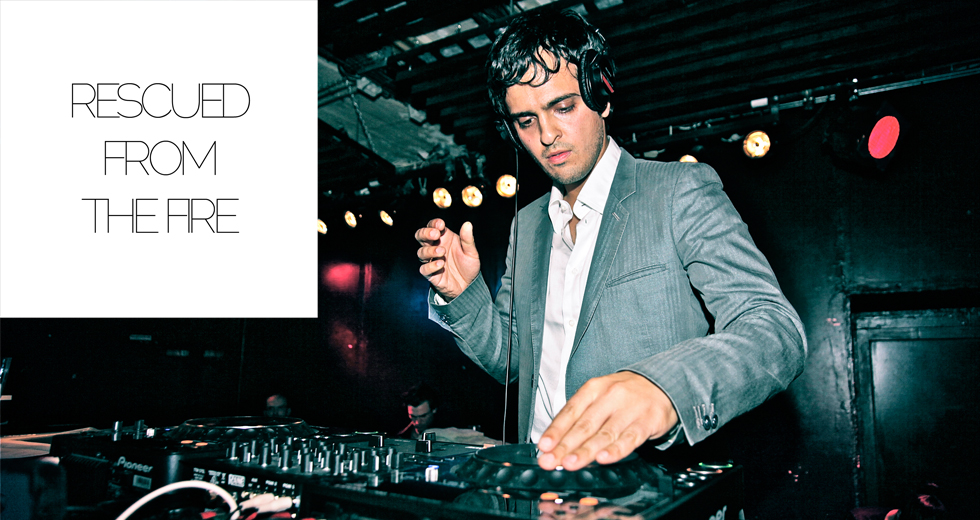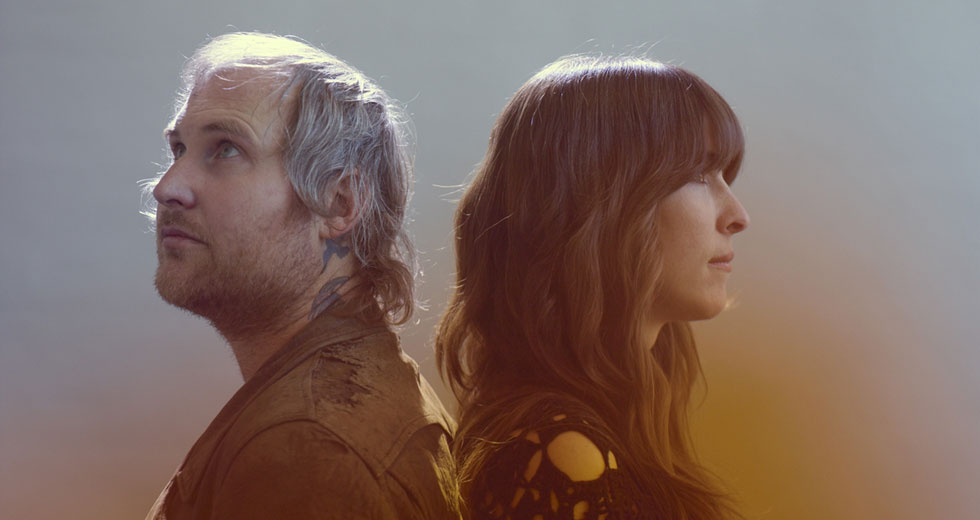The Sound of Peace Music Studio
Soichiro Nakamura, You Ishihara, and Shintaro Sakamoto talk about the vaunted studio responsible from Japanese psych landmarks from Boris, Yurayura Teikoku, and Ogre You Asshole.
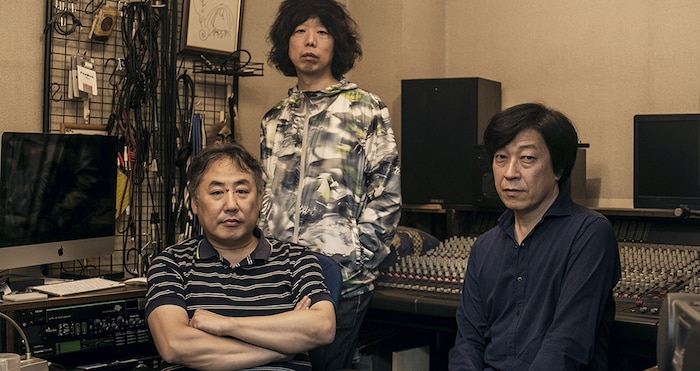
Fuda is a city west of Tokyo, 15 kms away from the center of Shinjuku, and 40 minutes by subway. This suburban residential area is where Peace Music Studio, owned by recording engineer Soichiro Nakamura is located.
His name and his studio have been credited on countless albums that are known for their originality and musicianship, by artists such as Boris, Yurayura Teikoku, Shintaro Sakamoto, Nisennen Mondai, and Ogre You Asshole, which have all been praised both in Japan and internationally. Looking back on the records that were recorded at Peace Music Studio by Nakamura, one cannot help but imagine that there must be fascinating stories and production secrets hidden behind the walls of the studio.
When I arrived, I saw the studio was in the bottom floor of a nondescript apartment building in an ordinary looking Tokyo suburb, dispelling any of my grandiose expectations. Walking into the studio, there is a recording booth to the right, and a control room to the left with a soundproof door. Peace Music Studio is not a big studio by any standard. There is an upright piano, several mic stands, and guitar and bass amps in the booth. There was no drum set the day I went, but if a three piece band were to use the studio, there would no space to walk around. Even in the control room, if Nakamura sat in front of the analog mixer, there would only be room for four or five people. His “infamous” collection of fuzz effects and equipment are tucked away in a storage room.
When he founded his studio in the ’90s, Nakamura worked on numerous records released by the Captain Trip label, known for reissuing krautrock and underground rock. He worked with his production partner Yo Ishihara (former member of The White Heaven/Stars) on records by Yura Yura Teikoku and Ogre You Asshole, which helped to establish the studio’s reputation. Now, musicians such as Keiji Haino and many artists from Julian Cope’s underground psych scene book Japrocksampler all frequent this studio. That said, the eclectic records that this studio has been churning out recently cannot be confined to one scene.
In this interview we spoke with Nakamura, Ishihara, and Shintaro Sakamoto to delve into the production secrets and history of Peace Music Studio, as well as the masterpieces created there.
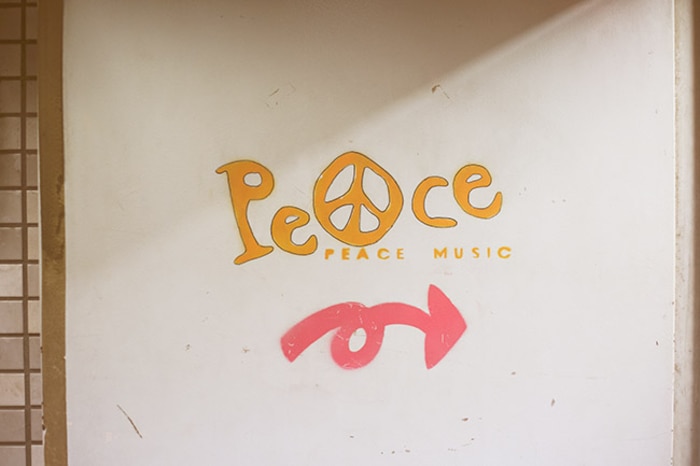
I heard that you were recording classical music before you opened this studio?
Soichiro Nakamura: I used to work at Kojima Rokuon [a pioneering indie label established in 1974 known for releasing classical music]. Besides releasing classical music, Kojima Rokuon released a lot of indie artists like Ryuichi Sakamoto, Kaoru Abe, and Masayuki Takayanagi. When I was working there, the avant-garde artists and jazz artists had left the label. I would record orchestras at Suntory Hall [a major venue for classical music in Japan] for the label. This was around 1991, which was right before Takayanagi passed away. Otomo Yoshihide was Takayanagi’s driver back then. While I was working at Kojima Rokuon, I started up a studio in 1991 that was the predecessor of Peace Music.
I never went to school to be an engineer, and I didn’t study under anyone, so there’s so much I still don’t know about. I’ve always learned recording techniques by trial and error, by first researching a recording technique, and then actually trying it out in a recording session. So there’s probably a lot of things that a conventional recording engineer can do, that I can’t do. Before I became and engineer I was a musician, and I always thought that recording engineers were like doctors, who had an air of superiority. I hated having to ask an engineer to record my music. Plus the music never sounded the way I wanted it to. So I became an engineer to record my own music.
What kind of projects were you recording when you first started Peace Music?
Soichiro Nakamura: I was working on all sorts of projects from the start. I had accumulated enough recording gear by then, and I started recording White Heaven and bands from that scene. From there I started recording bands outside of the circle of people I knew. Ken Matsutani [owner of Captain Trip records, known for releasing old and new krautrock and underground psych from around the world] started bringing over bands and artists to record here also.
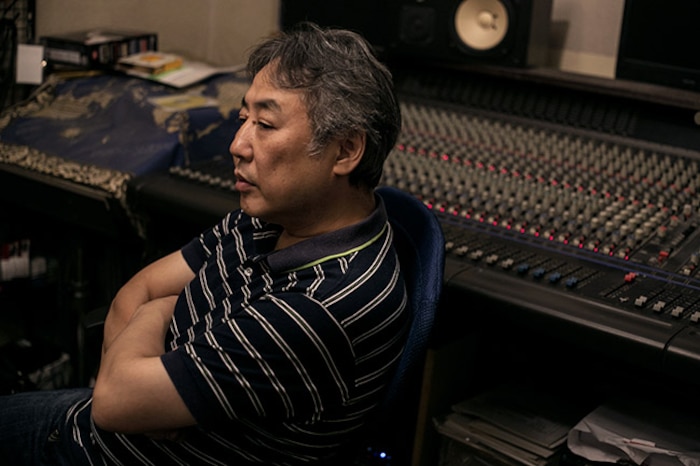
You use an analog mixer at your studio as the main mixer, and the studio is quite compact. I have a feeling that you exhaust all the possibilities of the gear in your studio when you record, which has made your engineering style unique.
“When the pedal arrives, I open the box, smell it, and then put it away.”
Soichiro Nakamura: No, it was just that I couldn’t afford to buy new gear. When I started the studio I was desperately collecting used gear, and I continued to buy used gear from other people. I have gear here that I have been using for 20 years since the studio opened. My main mixer is the Amek Big 44 channel mixer, and it’s the fourth one I’m using, so I’ve used it for ten years. They don’t make parts for this mixer anymore, so if it breaks I can’t get it fixed. But these days I can’t rely on an analog mixer alone, because some bands want to do lots of edits in Pro Tools. I’ve found that being able to edit infinitely on the computer actually takes more time. But the reality is that analog tape isn’t being used anymore. I do have a 16 channel analog tape recorder at the studio, but the last time I used it was on Yura Yura’s Hollow Me in 2007. I’ve hardly used it since then, so I should probably put it in storage.
I heard you have an extensive vintage fuzz pedal collection.
Soichiro Nakamura: I’m a hoarder. With fuzz pedals, what’s important is the fact that “I bought it.” I don’t care if the pedal is in my studio or not. What’s important is that I know that I am the owner of the pedal. [laughs] I have so many that there are ones that I’ve never used before. When the pedal arrives, I open the box, smell it, and then put it away.
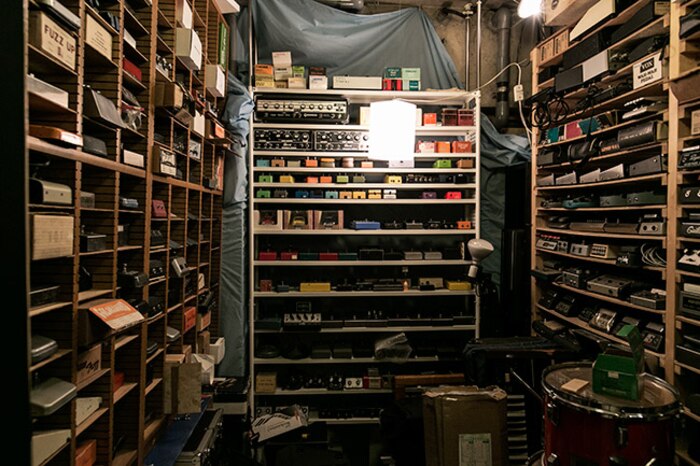
Yura Yura Teikoku released Are You Ra? on Captain Trip in 1996, then after changing labels you guys released 3X3X3 in 1998, and then you continued to record here until 2010 when the band broke up right?
Shintaro Sakamoto: When we recorded Are You Ra?, I was able to record the sound I had in my head. In 1998 we released 3X3X3 on a major label, but back then, I had this image in my mind that records released on major labels end up having a more polished sound. I didn’t want that to happen on my record, so I wanted to record in the same environment as Are You Ra? where we had Ishihara-san as the producer. I’ve been recording at Nakamura-san’s studio ever since.
Yo Ishihara: I had performed with Yura Yura Teikoku in one of my previous bands so I knew them. When we recorded Are You Ra?, we had a small budget so the band rehearsed for two or three days, and then we went straight into recording. The songs had a garage rock sound to them, so we decided to have the band play the drums, bass, and guitar together and create a good vibe. We got more time to record, so we had the opportunity to try new things. We experimented in the studio and incorporated those sounds into the songs. Sakamoto would bring in the songs, and tell us his vision for each song. After that I would suggest arrangements and sounds. Sometimes we would try to produce the songs so they sounded close to the vision that the band had, or sometimes we would do the complete opposite, and if the band liked it, then we would go with it.
Soichiro Nakamura: When the band and Ishihara-san were discussing ideas, my role was to suggest instruments and recording techniques to create the sounds that they wanted. So my role was more technical.
Yo Ishihara: But the gear was crucial, because certain types of gear create certain types of sounds. When a piece of gear would make an interesting sound, everyone in the studio would get excited and say, “Let’s use this.”
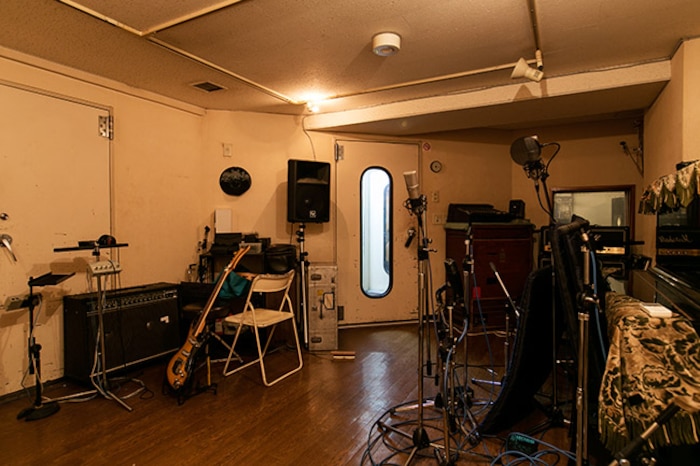
After Yura Yura Teikoku signed to Sony in 2005, you released Sweet Spot, and in 2007 you released Hollow Me. On Hollow Me the sound changed from garage rock to a mellower psychedelic rock sound that incorporated a pulsating beat. Was this the band’s idea, or did it come from Ishihara-san?
Yo Ishihara: The change in sound on Hollow Me was more of Sakamoto’s personal idea, rather than the band’s.
Soichiro Nakamura: Over half of the recording on Hollow Me was done by us three [Sakamoto, Nakamura, and Ishihara].
Shintaro Sakamoto: Before we recorded that album, I spoke to Ishihara-san a bunch of times about my ideas. Another big change was that before Hollow Me, we were recording songs that we had already performed a lot at gigs. On Hollow Me, we recorded the songs first, then performed them live.
Nakamura-san, you also recorded a lot of albums by Boris after 2000.
Soichiro Nakamura: When I work with them, I first have to convince them to do things. I would tell them, “We can get more punch if we keep the volume of the amps low, and record them loud.” I would give them this kind of advice, and then two or three years later they would say, “Now I understand what you were trying to say.”
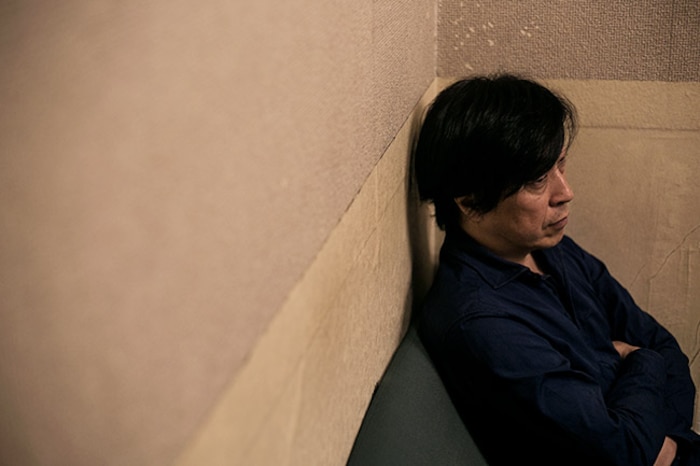
Ishihara-san, you produced the Japanese version of Boris’ Smile right?
Yo Ishihara: That’s an infamous album. When people from abroad buy the Japanese version, they say, “This isn’t Boris.” [laughs] The band wanted to make the international version and Japanese version sound different, so the Japanese version was mixed differently. In other words, it was a remix. What we did was remix the international version before it was even finished.
You also worked on Yura Yura Teikoku’s remix album REMIX 2005-2008, which is unique as a producer.
Yo Ishihara: Normally when a band gets a record remixed, they ask an outside artist to remix their music, rather than the producer of their albums. It’s rare to remix a record an artist you’ve produced.
Soichiro Nakamura: But Ishihara-san is the type of person that is into doing things like that.
What is your process when you work on remixes together?
Yo Ishihara: I don’t have gear at home, so I come to this studio and I’ll ask Nakamura, “You can do this, right?” And then he’ll say something like, “No, we can’t do that” and we’ll exchange ideas. I don’t have much knowledge about gear, so I don’t know what’s possible or not possible. But Nakamura is the kind of person that can make the impossible possible.
Soichiro Nakamura: Ishihara-san will ask, “Can you make it so the music sounds distant?” Normally engineers will use reverb, and lower the volume right? But when I do that Ishihara-san will say, “No, that’s not what I want.” He’ll say, “I want distance in time.”
Nakamura-san, you also worked on Nisennenmondai’s Rokuon and Destination Tokyo, right?
Soichiro Nakamura: They’re very stoic. They have a strong vision in their heads, and they are also a really tight-knit group, so it’s hard to get them to listen. They’ll try my ideas out, but in the end they’ll usually say, “We like our idea better.” Ishihara-san and I worked on a remix for them, and unlike their original music, we got to really try all kinds of things out [released on Nisennenmondai Ep from Shintaro Sakamoto’s label Zelone in 2013].
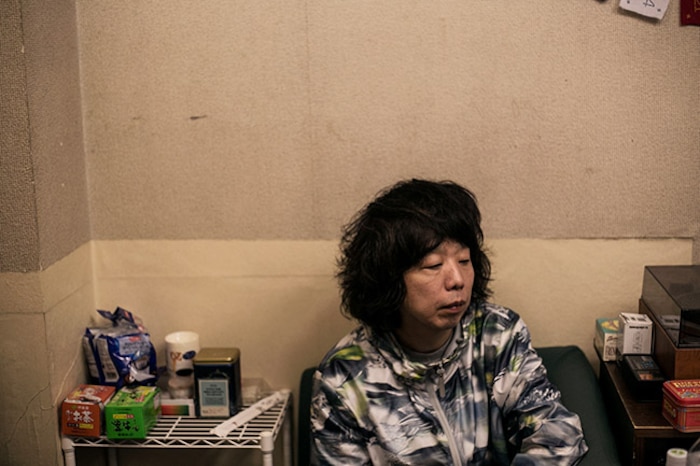
These past two or three years, Peace Music Studio has developed a worldwide reputation worldwide for the records that were produced after Yura Yura Teikoku ended and Sakamoto became a solo artist. Was there something different you did in recording Shintaro Sakamoto’s solo records?
Soichiro Nakamura: There are differences in the instruments that we used, but Sakamoto himself hasn’t changed much.
Shintaro Sakamoto: We’ll decide on an overall sound and then start recording, and keep the balance in mind. We hardly used any EQing in the mix.
Soichiro Nakamura: We finished the record as an analog mix. This might sound exaggerated, but we pretty much delivered the music the same way it was recorded.
Shintaro Sakamoto: Hasunuma [Yuta], who played drums, played a big role in the sound of the record. He can maintain a constant rhythm at a small volume. He can naturally play drums that sound like they’re compressed. So we didn’t have to compress the drums later. He can play drums like how they sound on old records.
Your newest record, Let’s Dance Raw, was praised as a “lost breakbeat album,” and it really sounds like that. Does Peace Music Studio have a signature sound that you could explain?
Shintaro Sakamoto: There’s a certain sound that Nakamura-san likes which is reflected on the records he works on. When I listen to the albums he records, I can tell if it was recorded at Peace Music Studio by listening to the drums.
Yo Ishihara: Whatever is recorded here reflects Nakamura’s preferences. There are some engineers and studios that have a definite signature sound, but Peace Music is more flexible.
Soichiro Nakamura: When I mix records, I’ll mix them in the way I want to hear them. I will present the mix to the artist, and they’ll give me a green light, or sometimes they’ll say “bring down the low end,” and then I’ll make adjustments. Most engineers would work on each sound with the artist and ask, “What should we do about the bass drum?” But there are usually budgetary and time constraints, so we have to work quickly. We can’t work at the pace of normal studios, so when I work with an artist for the first time, I have a meeting with them beforehand. Sometimes I have to tell them, “I don’t think it will fit with our studio” and turn down the project. I normally tell artists, “We want to record a good vocal performance, so think of it as a live studio recording.” Of course we can use the budget and take our time on mixing and do interesting things like that as well.
I finally wanted to ask you about the origin of the name Peace Music Studio.
Soichiro Nakamura: We said, “Let’s come up with the worst name possible” and ended up with this name. There weren’t any other studios with the same name, so it stuck. I don’t really like hippie culture, so I’m sometimes embarrassed by this name.
Translated by Hashim Bharoocha, Photos: Yosuke Torii
